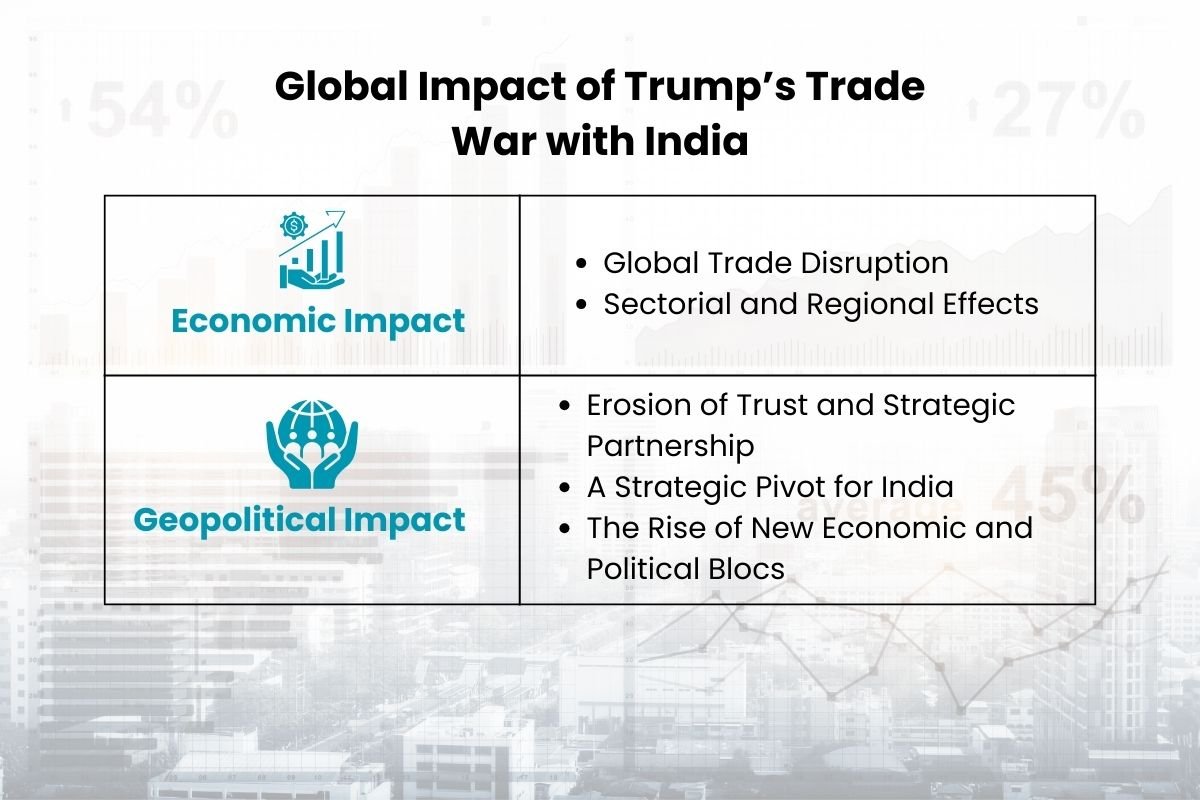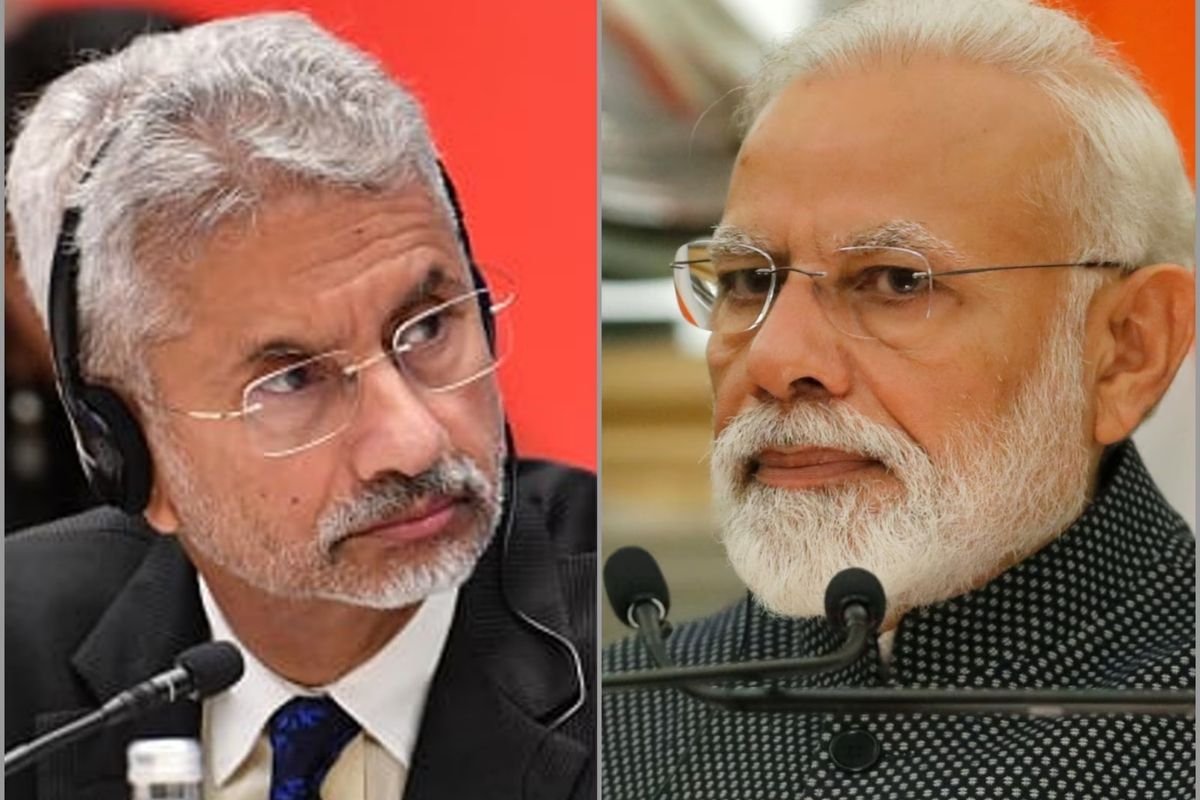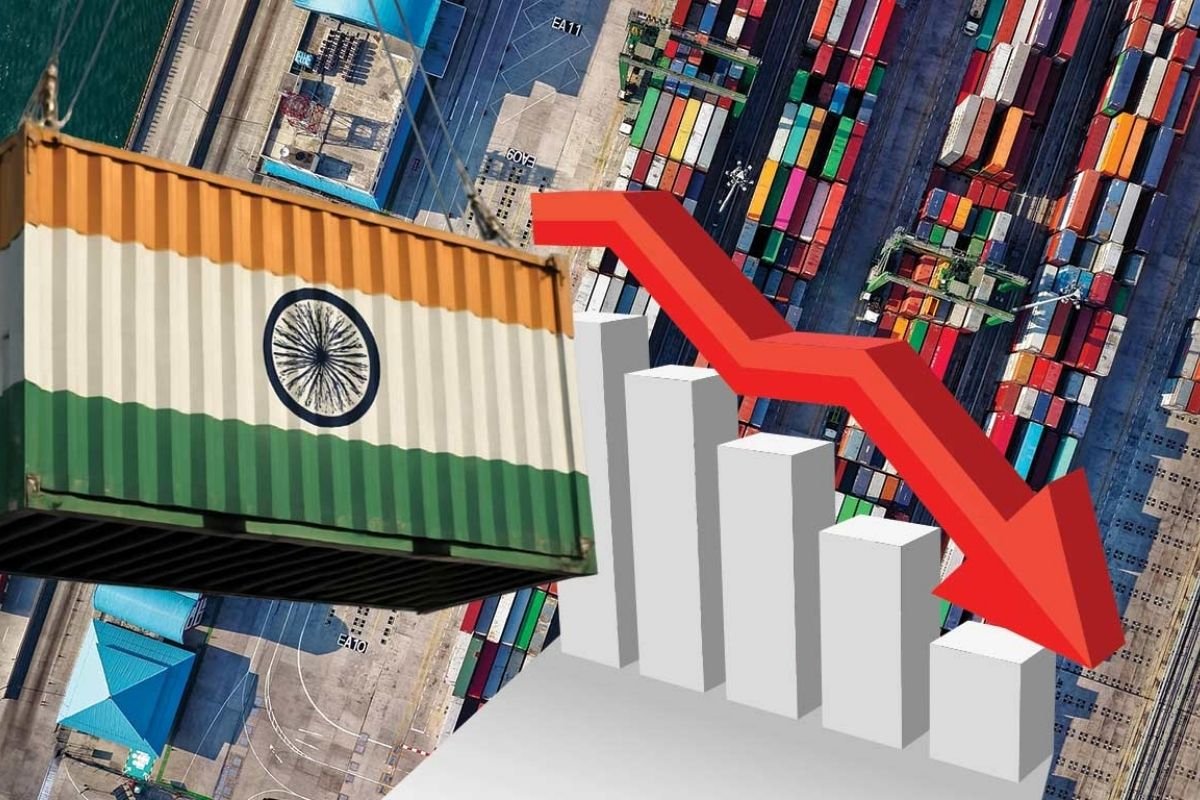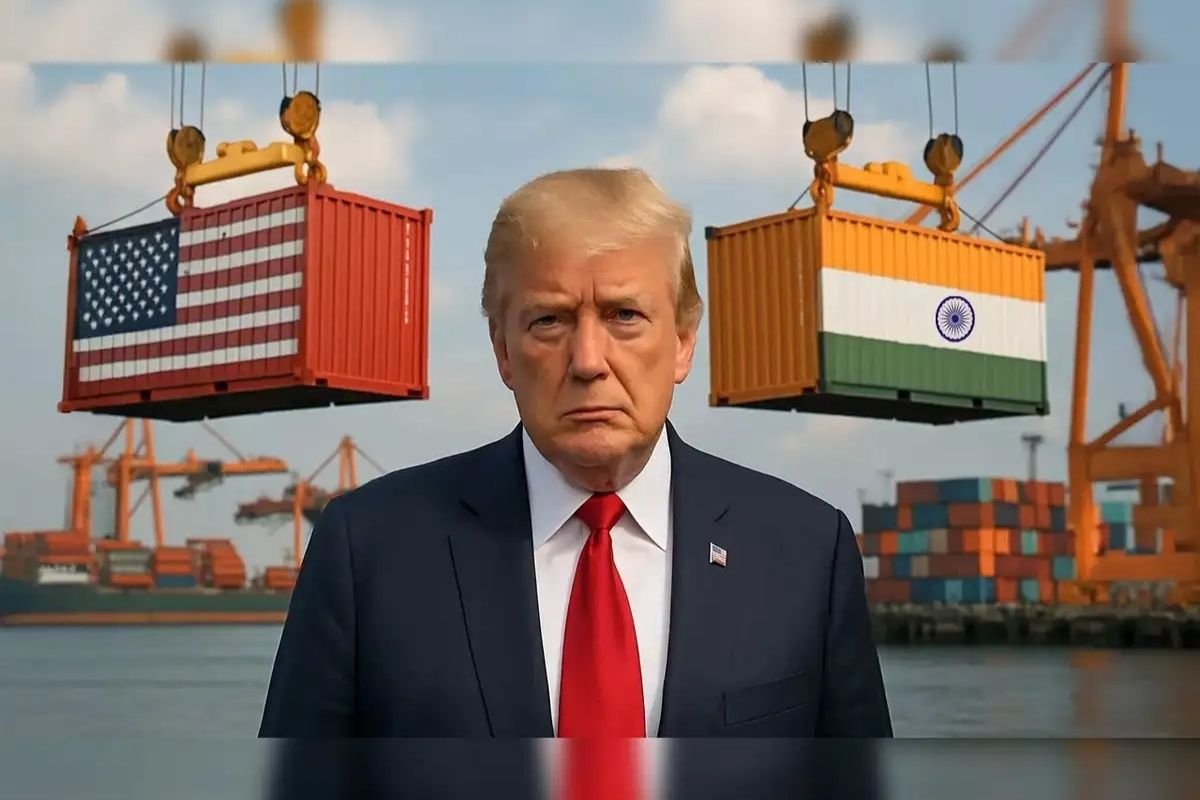There is no story as compelling in the political ecosystem as Trump’s trade war with India. When the world’s oldest democracy is pitted against the world’s largest democracy, it has a universal implication and impact. One of the most powerful allies in the past, their relationship has been strained by the aggressive policies of the Trump administration.
But how did these two allies end up in such a situation? What does it mean to the global trade market, and what will be the impact of Trump’s trade war on India? Your mind might be clouded by all these thoughts. And rightfully so, the tariffs and trade war will have a long-lasting impact on the market and businesses everywhere.
In this blog, we shall take a look at the history and timeline of Trump’s Trade War with India and its global impact. So, without further ado, let’s dive right into it.
Timeline of Trump’s Trade War With India: What Started It?
The trade war between the Trump administration and India has been a defining feature of their relationship recently. While trade tensions have existed for years, a series of specific actions and reactions, motivated by the “America First” policy of the Trump administration, escalated the situation.
According to Trump, these tariffs are a penalty for India’s continuous oil trade with Russia. He also accused India of unfair trade practices and stealing American jobs.
Here is a timeline of key events:
| Date | Event | Key Details |
|---|---|---|
| Early 2018 | US criticism of Indian tariffs | Trump criticized India’s high import tariffs, calling it the “Tariff King.” Specifically cited 100% duty on Harley-Davidson motorcycles. |
| March 2018 | US tariffs on steel & aluminium | The US imposed a 25% tariff on steel and 10% on aluminium imports globally, impacting India. |
| March 2019 | US announces GSP withdrawal | India to lose duty-free access under GSP (~$5B worth of goods). Reason: India failed to provide “equitable and reasonable access” to US markets. |
| June 5, 2019 | GSP withdrawal takes effect | Official end of India’s GSP benefits; major impact on labour-intensive exports. |
| June 16, 2019 | India retaliates with tariffs | India imposed tariffs on 28 US products (almonds, walnuts, apples, chickpeas, etc.) in response to US steel & aluminium duties. |
| July 30, 2025 | US imposes new tariffs | Trump announced a 25% reciprocal tariff on wide range of Indian goods (effective Aug 1). Linked to failed negotiations & India’s Russian crude imports. |
| August 6, 2025 | Tariffs doubled | Trump signed an executive order imposing another 25% tariff, making the total duty 50% on many Indian goods. Justified as “secondary pressure” on Russia. |
| August 25, 2025 | India suspends parcel services | India’s Department of Posts halted all parcel services to the US after new US customs rules ended duty-free exemptions. Marked a sharper escalation. |
Global Impact of Trump’s Trade War with India

Trump’s trade war with India, while a bilateral issue, has surpassed the two countries. It had a ripple effect on the global trade market. The business world is not watching but continuously trying to adapt to the uncertainties this war has brought.
Here is how the world has been impacted by the trade war between India and the US.
Economic Impact:
The tariffs had a huge impact on the economy of both countries. It has slowed down growth and heavily affected the macroeconomic landscape.
Here’s a breakdown of the impact it had on the economy.
1. Global Trade Disruption:
The imposition of high tariffs on Indian exports, covering about 66% of its exports to the US, valued at around $60 billion, has disrupted supply chains and shifted trade flows. Countries like China, Vietnam, Mexico, Turkey, and others stand to gain market share as they benefit from lower tariffs compared to India.
The tariffs have increased costs for US importers. This typically passes on these costs to consumers, inducing inflationary pressures globally.
A slowdown in the US, one of the largest economies, echoes worldwide. It could potentially trigger global recessionary pressures given interconnected supply chains and trade dependencies.
A study by the Peterson Institute for International Economics (PIIE) indicates that Trump’s tariffs reduce not only US economic growth but also global growth, with inflation rising in many economies. The scale of these effects depends on how other countries retaliate and currency movements.
2. Sectorial and Regional Effects:
Export-reliant economies face revenue losses and reduced production, leading to job cuts, especially in sectors like textiles, apparel, and manufacturing.
Medium-sized businesses globally, lacking the capacity to quickly adjust supply chains or absorb costs, face severe challenges.
Geopolitical Impact:
Trump’s trade war with India is reshaping alliances in Asia and beyond. The geopolitical impact of the tariff war has been historical.
Here’s how it has been impacted:
1. Erosion of Trust and Strategic Partnership:
Trump’s trade war with India has created a massive trust deficit in New Delhi. Indian officials and analysts have expressed a sense of being treated as a “transactional adversary” rather than a valued partner. This has raised fundamental questions about the reliability of the US as an ally.
The public spectacle of the US punishing a key member of the Quad (Quadrilateral Security Dialogue), which includes the US, India, Japan, and Australia, undermines the very purpose of the alliance. By creating friction with India, the US is inadvertently weakening its own strategy for the Indo-Pacific and creating an opening for China to exploit.
2. A Strategic Pivot for India:
The US tariffs are a strong motivation for India to improve its strained relationship with China. With access to the US market in jeopardy, Indian businesses and the government are exploring new avenues for trade.
China, as a major trading partner, presents a necessary alternative. While historical border disputes and strategic competition remain, the economic pressure from the US is forcing a pragmatic reconciliation.
The tariffs, which were explicitly linked to India’s energy trade with Russia, have only strengthened India’s resolve to maintain its strategic autonomy. Indian officials have defended their oil purchases as a matter of national interest and energy security. This has led to a deepening of military and economic ties with Moscow.
3. The Rise of New Economic and Political Blocs:
The US’s use of tariffs against major trading partners is encouraging the formation of new alliances that are less reliant on the American-led economic system. The BRICS nations (Brazil, Russia, India, China, and South Africa) are actively discussing ways to deepen their trade, link their digital payment systems, and create a buffer against US economic pressure. The data by BCG already shows that trade between BRICS nations is growing at a faster rate than their trade with the US.
The treatment of India sends a clear message to other US allies: no one is immune from the “America First” policy. Countries like Japan, Germany, and South Korea are also facing renewed US protectionism.
They are now seriously considering long-term alternatives to a US-centred economic and security framework. This is leading to a new era of hedging, where allies are quietly diversifying their relationships to hedge against American unpredictability.
What This Means for Your Business:
The section that has been the most hurt by Trump’s trade war with India is the business sector. Many industries are paying the price of the geopolitical tension between the two countries.
1. Supply Chain and Market Diversification Challenges:

Due to the tariffs, exporters are forced to seek alternative markets, but shifting supply chains is costly and time-consuming. This has created a short-term business instability worldwide.
Many companies are exploring new trade partnerships in Europe, Southeast Asia, and the Middle East. But these markets often offer lower volumes and different regulatory challenges compared to the US market.
Domestic production and quality improvement initiatives are also being accelerated to remain competitive globally.
2. Export Competitiveness and Revenue Loss:
The tariffs have sharply reduced the competitiveness of Indian products in the US by making them significantly more expensive. This has led to cancellations and declines in orders. The labour-intensive sectors like textiles, apparel, gems and jewellery, leather goods, seafood (notably shrimp), and automobile parts are the most affected by this change.
Gems and jewellery exports, worth $9.2 billion in FY24, have seen shipments halted, affecting employment in that sector.
This tariff is projected to reduce export volumes in these labour-intensive sectors by as much as 70%, resulting in an overall 43% decline in India’s exports to the US, down from $86.5 billion in FY2025 to $49.6 billion in FY2026.
The Global Trade Research Initiative (GTRI) projects Indian shipments to the US may decline by 40-50% due to the higher tariffs, leading to significant erosion of foreign exchange earnings.
3. Price Inflation and Cost Pressures:
The tariffs put upward pressure on input costs. It has especially pressured businesses dependent on raw materials or components imported from the US or routed through US suppliers.
Currency depreciation in response to trade tensions further increases costs for importers and businesses with foreign debt, impacting profitability and pricing strategies.
Sector-wise Impact of Tariffs:
| Sector | Impact Description | Approx. Export Value Affected (USD billion) | Tariff Rate |
| Gems & Jewellery | High exposure to the US, significant MSME impact, risk to diamond exports, and employment regions | ~10 | 50%+ |
| Textiles & Apparel | Severe impact on garment exports (e.g., Tirupur cluster), large volume exposed, MSMEs affected | ~10.8 | ~60%-64% |
| Seafood (Shrimp) | High tariff puts export competitiveness at risk, especially vs Ecuador | ~2.4 | 50%+ |
| Chemicals | MSMEs face tough competition from countries with lower tariffs | Not specified | 50%+ |
| Auto Components | Moderate impact, smaller US market share; risk to MSME components suppliers | ~3.4 (some parts) | 25%-50% |
| Carpets & Handicrafts | High tariffs, risk of losing US buyers to competitors such as Turkey and Vietnam | ~1.2 (carpets), ~1.6 (handicrafts) | 50%+ |
| Agricultural Produce | Impact on Basmati, spices, and tea; competition gains to Pakistan, Thailand | ~6 | 50% |
| Steel & Metals | Minimal impact on MSMEs due to product focus and small US share | ~4.7 (metal exports) | 50%+ |
| Pharmaceuticals | Currently exempt from tariffs, no impact | Not tariffed | 0% |
India’s Response to the Trade War
The response to Trump’s trade war with India has been a mix of diplomatic firmness, strategic resilience, and a quiet search for new economic avenues. India has made it clear that it will not back down or fold under pressure.
The country has taken some important decisions to defend itself against the tariff wars.
1. Diplomatic and Rhetorical Response:

The Indian government has consistently defended itself. Indian leaders, including Prime Minister Narendra Modi, have stated that India’s trade and foreign policy decisions, including the purchase of Russian crude oil, are guided by its national interest and the energy security needs of its 1.4 billion people.
Prime Minister Narendra Modi, when speaking in Ahmedabad, said, “No matter how high the pressure, India will continue to build its strength to withstand it.”
Narendra Modi described the era as one of “economic selfishness” and vowed reforms and a push for self-reliance to counter US tariffs.
External Affairs Minister S. Jaishankar and other officials have forcefully rejected the notion that India is “profiteering” from the Russia-Ukraine conflict. They have pointed out the hypocrisy of the US, noting that many European and even American companies continue to trade with Russia.
India has communicated that while it is open to dialogue, there are “red lines” in trade negotiations that it will not cross. These include protecting the interests of its farmers, small businesses, and labour-intensive sectors from foreign competition.
2. Economic and Policy Response:
The government of India is working on ways to mitigate the economic damage from this trade war. They are considering specific support measures for the most affected sectors, such as textiles, gems and jewellery, and leather. These measures may include targeted credit lines, interest-free loans, and subsidies to help exporters stay afloat and remain competitive.
Indian leaders are doubling down on the “Atmanirbhar Bharat” (Self-Reliant India) initiative. The initiative aims to boost domestic production and consumption. The government is also fast-tracking reforms. Reforms, such as simplifying the Goods and Services Tax (GST) system and reducing bureaucratic red tape, are made to ease business and attract investment.
The Reserve Bank of India (RBI) announced special support measures for impacted sectors and expressed confidence that trade negotiations would eventually reduce tariffs.
Meanwhile, Indian businesses, with the government’s encouragement, are actively seeking new markets. This is leading to a deepening of trade relationships with other major economies. This includes a cautious reset in ties with China and a greater focus on strengthening trade with other BRICS nations.
3. Strategic and Geopolitical Response:
The US’s use of tariffs as a tool of punishment for India’s Russian oil purchases has, paradoxically, strengthened the resolve in New Delhi to maintain its long-standing relationship with Moscow. India continues to buy discounted Russian oil, and diplomatic and trade discussions between the two countries are ongoing.
The US tariffs have created a pragmatic opening for India and China to re-engage on trade and diplomacy. While border disputes remain a major concern, the economic pressure from the US is pushing the two Asian giants to explore ways to increase trade and cooperation, even as they compete strategically.
The Indian government has taken a more direct approach in Washington. It has hired a lobbying firm with deep ties to the Trump administration to navigate the political landscape and convey its position directly to decision-makers. This move signals that India is not just waiting for the situation to resolve itself, but is proactively working to influence US policy from within.
In short, India’s response to the trade war has been firm, calculated, and multidimensional. It has not retaliated with a broad range of tariffs. Instead, the country has chosen to focus on diplomatic resolve, domestic economic resilience, and a calculated pivot towards a more multi-polar global order.
What Does Trump’s Trade War with India Mean for the Future?
The trade war has an immediate impact on the near future and a long-term impact on the future of the world. Let us break down how the future might look due to the tariff wars between the two countries.
The Immediate Future:
With the recent implementation of an additional 25% tariff, bringing the total duty on many Indian goods to an astounding 50%, the immediate future for Indian exporters seems terrible. Indian industries like textiles, gems and jewellery, and seafood, are getting ready for a major downturn.

- Economic Fallout: A report by the Global Trade Research Initiative (GTRI) suggests that a full 50% tariff could slash Indian exports to the US by over 40% and have a noticeable negative effect on the country’s GDP growth. The US is still the biggest market for Indian goods, with exports to America topping $77.5B in 2024. The immediate priority for the Indian government will be to provide a financial lifeline to these affected businesses and prevent widespread job losses.
- Continued Geopolitical Leverage: The US is using the tariffs as a tool to pressure India to reduce its trade with Russia. As long as India continues to purchase discounted Russian crude oil, the US may not see a reason to back down. This makes a quick resolution difficult, as India views its energy security as a matter of national sovereignty that is not up for negotiation.
The Long-Term Impact:
- Potential For Diplomatic Negotiation: Both India and the US have expressed desires to negotiate, with hopes that tariffs could be moderated or reduced through talks later in 2025. One of the proposed ideas includes reciprocal tariff reductions capped at 15-20% and additional trade concessions related to investment, market access, and agricultural products.
- Permanent Change in Supply Chain: Trump’s trade war with India is expected to cause permanent changes in supply chains and trade routes, with some sectors never fully regaining their US market positions. Before the tariffs, India was the biggest supplier of textiles to the US. But after the tariffs, many American buyers have shifted their sourcing to countries like Vietnam, Bangladesh, and Mexico, which face lower or no tariffs.
- Emergence of New Markets: Emerging multipolar trade blocs like BRICS are strengthening as countries recalibrate alliances due to US protectionism. Because of the trade war, India is likely to look out for an alternate market and regional trade partnership. It is also the reset of American economic dominance. The tariffs will be a major shift from a US-centric trade market to a much more global trading ground.
Conclusion:
Trump’s trade war with India has created a major and lasting shift in global trade. What started as tariffs on steel and aluminium has now escalated into a full-blown economic conflict. With tariffs on many Indian goods now as high as 50%, Indian exporters are facing a massive downturn, and a significant number of jobs are at risk.
This has forced India to look for new trade partners and has pushed it closer to other economic blocs, such as the BRICS nations, as it seeks to reduce its reliance on the US market.
The conflict also highlights a key change in international relations. By using tariffs to pressure India over its oil trade with Russia, the US is showing that it will use economic penalties against even its allies.
This has made other countries question the reliability of the US as a partner and is encouraging them to diversify their relationships. The long-term result is a world that is less dependent on the US and more divided into different trading groups, signalling a new era of global economics.
FAQs
- Which specific Indian industries have been most affected by the trade ware?
The sectors that were impacted by the trade war include marine products (especially shrimp), auto parts, leather goods, and certain agricultural products such as chickpeas, lentils, and nuts.
However, some key sectors like pharmaceuticals, electronics, and energy have been exempted from the latest round of tariffs.
- How have U.S. businesses and consumers been impacted by the trade war?
US businesses that rely on Indian imports, such as those in the apparel and jewellery industries, are now facing higher costs. This may force them to find new suppliers, leading to disruptions in their supply chains. These increased costs are also likely to be passed on to US consumers, resulting in higher prices for certain goods.
- What is the status of the ongoing trade negotiations?
Trade negotiations have hit a major roadblock. A planned visit by a US delegation for the sixth round of talks was recently cancelled after the latest round of tariffs was announced. This makes a quick resolution unlikely, as India is unwilling to give in to US pressure to change its foreign policy.









